This ‘seasonal schedule’ is meant to help you keep track of nature’s events throughout an average Newfoundland year. Please keep in mind it’s only an approximation of reality, because the times, they are a-changin’.

Spring
With icebergs arriving in many places along our shores, spring is a wonderful time to be in Newfoundland. Expect weather to be quite brisk in April and even May, so dress appropriately.
April:
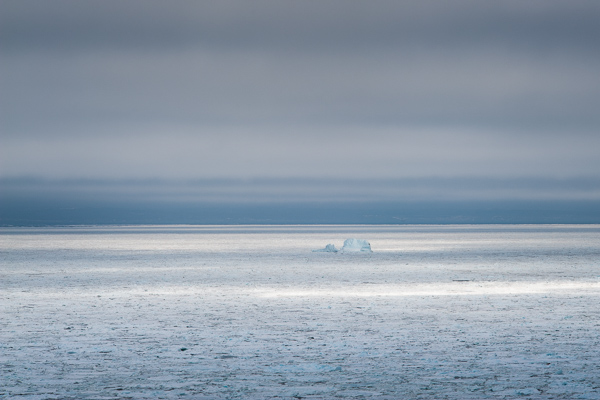
April
![]() Between 13 and 14.5 hours of light a day. The possibility of early icebergs combined with late sea ice offers a chance to hike through a truly unique landscape. On the trail, snow and ice are steadily melting, making hiking a soggy affair. Rivers and ponds are almost free of ice. River otters turn away from their diurnal schedule and return to their nocturnal habits. In late April, ospreys return to their nest and start off the new season.
Between 13 and 14.5 hours of light a day. The possibility of early icebergs combined with late sea ice offers a chance to hike through a truly unique landscape. On the trail, snow and ice are steadily melting, making hiking a soggy affair. Rivers and ponds are almost free of ice. River otters turn away from their diurnal schedule and return to their nocturnal habits. In late April, ospreys return to their nest and start off the new season.
May:
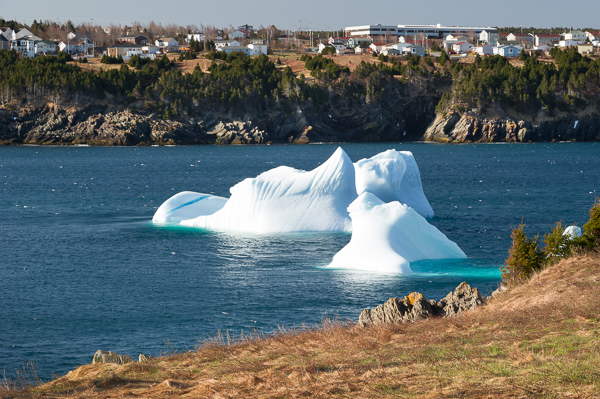
May
![]() Between 14.5 and 15.5 hours of light a day. Icebergs are floating by, some will get grounded and melt in shallow waters. Rivers, ponds and trails are now free of ice and snow. Gulls and some puffins are nesting, moose are calving in the forest, don’t get too close. Bald eagles have their eaglets. If temperatures are high enough, late May will have black flies. There is an increase of foggy weather.
Between 14.5 and 15.5 hours of light a day. Icebergs are floating by, some will get grounded and melt in shallow waters. Rivers, ponds and trails are now free of ice and snow. Gulls and some puffins are nesting, moose are calving in the forest, don’t get too close. Bald eagles have their eaglets. If temperatures are high enough, late May will have black flies. There is an increase of foggy weather.
June:
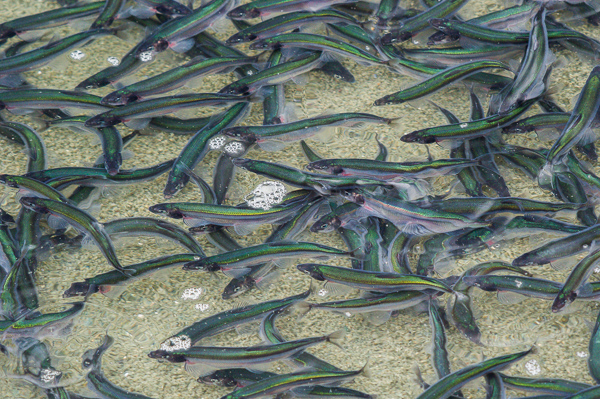
June
![]() Almost 16 hours of light every day. The trail is flanked by fresh green shoots and blossoms. Some icebergs are still floating by, most will get grounded and melt in shallow waters. Toads are crossing the roads in their spring migration. Gulls, puffins and gannets are nesting and will have their hatchlings this month. Blackflies will bug you on your hike when wind is absent. Foggy weather is mixed with plenty of sunshine. Trails are in good condition but get soggy on wet days. Early whales arrive in the bays. Very late in June (if not July), capelin will spawn on the beaches after a cold spell, an important event that marks the unofficial start of summer in Newfoundland.
Almost 16 hours of light every day. The trail is flanked by fresh green shoots and blossoms. Some icebergs are still floating by, most will get grounded and melt in shallow waters. Toads are crossing the roads in their spring migration. Gulls, puffins and gannets are nesting and will have their hatchlings this month. Blackflies will bug you on your hike when wind is absent. Foggy weather is mixed with plenty of sunshine. Trails are in good condition but get soggy on wet days. Early whales arrive in the bays. Very late in June (if not July), capelin will spawn on the beaches after a cold spell, an important event that marks the unofficial start of summer in Newfoundland.

Summer
Summer is the time when those who ‘come from away’ come to Newfoundland and fall in love. It’s a great time to go hiking, see all kinds of whales and seabirds, you may even get to enjoy some warm weather and a campfire at the beach.
July:

July
![]() Between 16 and 15 hours of light a day. Late capelin will still spawn. Icebergs are gone from the east coast. Warm weather abounds with fog patches during the early hours. Lots of tourists cover the scenic highlights. Whales are easily seen from shore or up close from a boat. Plenty of puffins and other pelagic birds can be spotted on the water. Trails are in good condition but get soggy on wet days. Lupins and hawkweed spring up by the side of the road. Berry picking starts, keep an eye out for the elusive bakeapple.
Between 16 and 15 hours of light a day. Late capelin will still spawn. Icebergs are gone from the east coast. Warm weather abounds with fog patches during the early hours. Lots of tourists cover the scenic highlights. Whales are easily seen from shore or up close from a boat. Plenty of puffins and other pelagic birds can be spotted on the water. Trails are in good condition but get soggy on wet days. Lupins and hawkweed spring up by the side of the road. Berry picking starts, keep an eye out for the elusive bakeapple.
August:
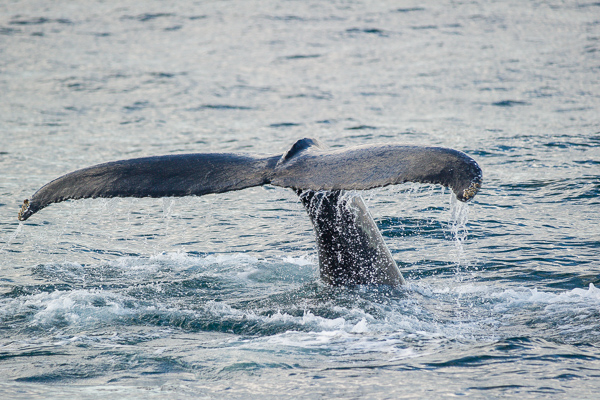
August
![]() Between 15 and 13.5 hours of light a day. Whales can be seen up close from a boat in early August, but sometimes they are just as easy to spot from shore. Murres and kittiwakes are fledging. Late in the month, puffins are the last to fledge and start a life at sea. Lots of tourists cover the scenic highlights. Cod jiggers are active on the cliffs and in small boats. Squid are sometimes observed near shore, sometimes even rolling onto the beach. Sperm whales visit known hotspots in Trinity Bay. In late August there is a decline in whale numbers on the east coast, while the season will last a little longer further north. Ocean water is the warmest of the year, and the large number of jellyfish in it attracts ocean sunfish. Trails are in good condition but get soggy on wet days. Berry picking continues, mushrooms shoot up in the forest. Oceanside meadows are swarming with dragonflies. Warm weather and high temperatures are the norm.
Between 15 and 13.5 hours of light a day. Whales can be seen up close from a boat in early August, but sometimes they are just as easy to spot from shore. Murres and kittiwakes are fledging. Late in the month, puffins are the last to fledge and start a life at sea. Lots of tourists cover the scenic highlights. Cod jiggers are active on the cliffs and in small boats. Squid are sometimes observed near shore, sometimes even rolling onto the beach. Sperm whales visit known hotspots in Trinity Bay. In late August there is a decline in whale numbers on the east coast, while the season will last a little longer further north. Ocean water is the warmest of the year, and the large number of jellyfish in it attracts ocean sunfish. Trails are in good condition but get soggy on wet days. Berry picking continues, mushrooms shoot up in the forest. Oceanside meadows are swarming with dragonflies. Warm weather and high temperatures are the norm.

Fall
After a busy summer filled with festivals and wildlife, fall is the time of year when things slow down again. Fall colours are best enjoyed on the barrens along the coast and the interior, where the landscape turns into a patchwork of vibrant reds and browns.
September:
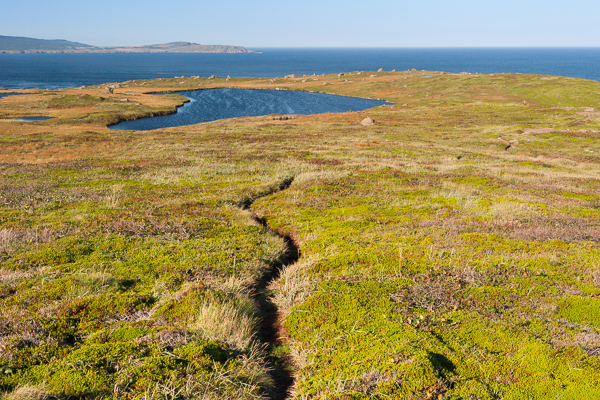
September
![]() Between 13.5 and 11.5 hours of light a day. Moose encounters become more frequent. There are very few whales left. Fish will start climbing the fish ladders and waterfalls. Early fall colours appear, bright reds on the west coast and the interior of the island, bright yellows on the east coast. Mushrooms spring up in the forest and berry picking continues. The tourist season is almost over as the last of the huge cruise ships visit St. John’s. Toads are on their fall migration, trying to find a good spot to hibernate until spring. Ospreys fly South for the winter.
Between 13.5 and 11.5 hours of light a day. Moose encounters become more frequent. There are very few whales left. Fish will start climbing the fish ladders and waterfalls. Early fall colours appear, bright reds on the west coast and the interior of the island, bright yellows on the east coast. Mushrooms spring up in the forest and berry picking continues. The tourist season is almost over as the last of the huge cruise ships visit St. John’s. Toads are on their fall migration, trying to find a good spot to hibernate until spring. Ospreys fly South for the winter.
October:
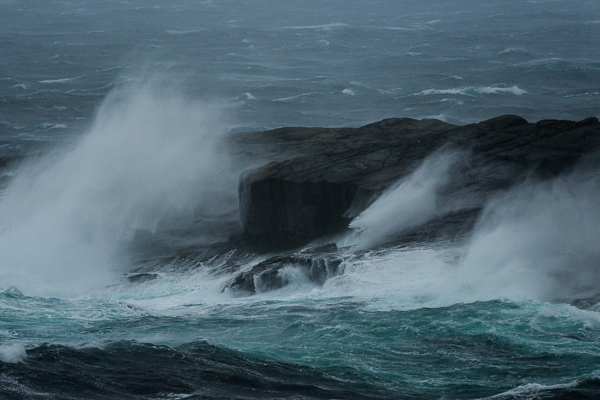
October
![]() Between 11.5 and 10 hours of light a day. Moose hunting season starts, be sure to wear bright colours in the forest. The trails remain in good condition except on wet days, when they possibly get ‘impassable’ due to heavy rain and high water. The first fall storms bring large quantities of precipitation. Fish are still climbing the fish ladders and waterfalls. The fall foliage is peaking or even past peaking.
Between 11.5 and 10 hours of light a day. Moose hunting season starts, be sure to wear bright colours in the forest. The trails remain in good condition except on wet days, when they possibly get ‘impassable’ due to heavy rain and high water. The first fall storms bring large quantities of precipitation. Fish are still climbing the fish ladders and waterfalls. The fall foliage is peaking or even past peaking.
November:
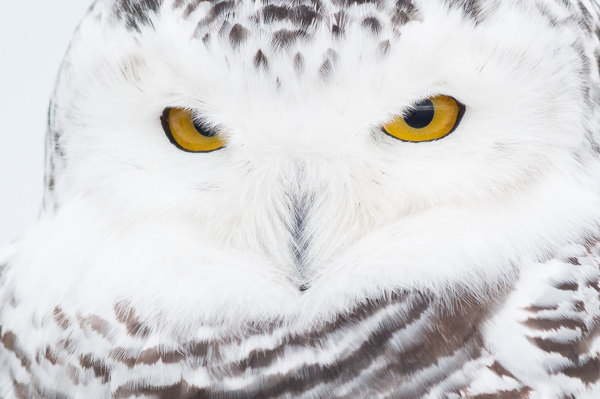
November
![]() Between 10 and 8.5 hours of light a day. The last of the fish are climbing the fish ladders and waterfalls. River otters start showing themselves more during the daytime. Fall foliage is largely gone. First snow falls and quickly melts. Temperatures are low but generally remain just above freezing. In some years, snowy owls are seen on the barrens.
Between 10 and 8.5 hours of light a day. The last of the fish are climbing the fish ladders and waterfalls. River otters start showing themselves more during the daytime. Fall foliage is largely gone. First snow falls and quickly melts. Temperatures are low but generally remain just above freezing. In some years, snowy owls are seen on the barrens.

Winter
Winter in Newfoundland is not as cold as mainland Canada, but it is much snowier. Outdoors, having a good pair of overboots or snowshoes will help you explore the lustrous landscape.
December:
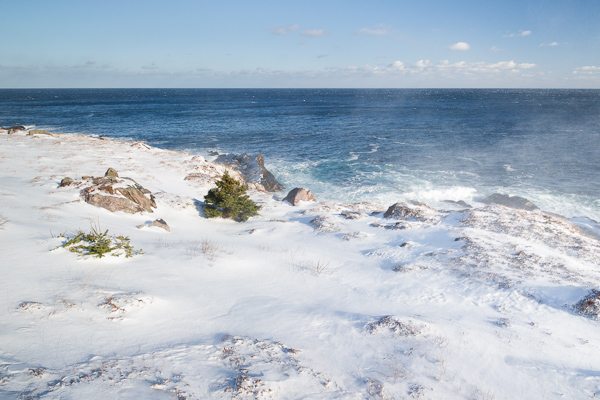
December
![]() About 8.5 hours of light a day. Snow falls in brief spells and quickly deepens on the trail, before melting again on mild and sunny days. Cold weather starts freezing rivers, ponds and waterfalls. Long nights are very dark and crystal clear when clouds are absent.
About 8.5 hours of light a day. Snow falls in brief spells and quickly deepens on the trail, before melting again on mild and sunny days. Cold weather starts freezing rivers, ponds and waterfalls. Long nights are very dark and crystal clear when clouds are absent.
January:

January
![]() Between 8.5 and 9.5 hours of light a day. Snow and ice cover the trails. Animal tracks are easy to spot thanks to the snow. Rivers, ponds and waterfalls are frozen. Harbour ice may attract sunbathing seals. Temperatures linger around 0 ℃ and are a little bit higher than in December.
Between 8.5 and 9.5 hours of light a day. Snow and ice cover the trails. Animal tracks are easy to spot thanks to the snow. Rivers, ponds and waterfalls are frozen. Harbour ice may attract sunbathing seals. Temperatures linger around 0 ℃ and are a little bit higher than in December.
February:

February
![]() Between 9.5 and 11 hours of light a day. Lots of snow and ice cover the trails, there is a distinct chance of snow storms. Rivers, ponds, waterfalls and even beaches are frozen. Harbour ice will attract sunbathing seals. Temperatures drop again, often well below freezing, making the air crisp.
Between 9.5 and 11 hours of light a day. Lots of snow and ice cover the trails, there is a distinct chance of snow storms. Rivers, ponds, waterfalls and even beaches are frozen. Harbour ice will attract sunbathing seals. Temperatures drop again, often well below freezing, making the air crisp.
March:

March
![]() Between 11 and 13 hours of light a day. Snow and ice on the trails. Frozen rivers, ponds and waterfalls are slowly thawing. There is an increased chance of freezing rain. Bays and harbours may get congested with sea ice later in the month. Seals are pupping on the ice floes. From high cliffs, large rafts of common eiders can be spotted on coastal waters. Temperatures are still quite low, but are steadily rising.
Between 11 and 13 hours of light a day. Snow and ice on the trails. Frozen rivers, ponds and waterfalls are slowly thawing. There is an increased chance of freezing rain. Bays and harbours may get congested with sea ice later in the month. Seals are pupping on the ice floes. From high cliffs, large rafts of common eiders can be spotted on coastal waters. Temperatures are still quite low, but are steadily rising.
East Coast Trail Guide
Newfoundland’s seasons are described in detail in the East Coast Trail Guide, a digital trail guide and photo book available on Apple Books. Along with these descriptions, the guide is filled with photos that show what Newfoundland is like throughout the year.
